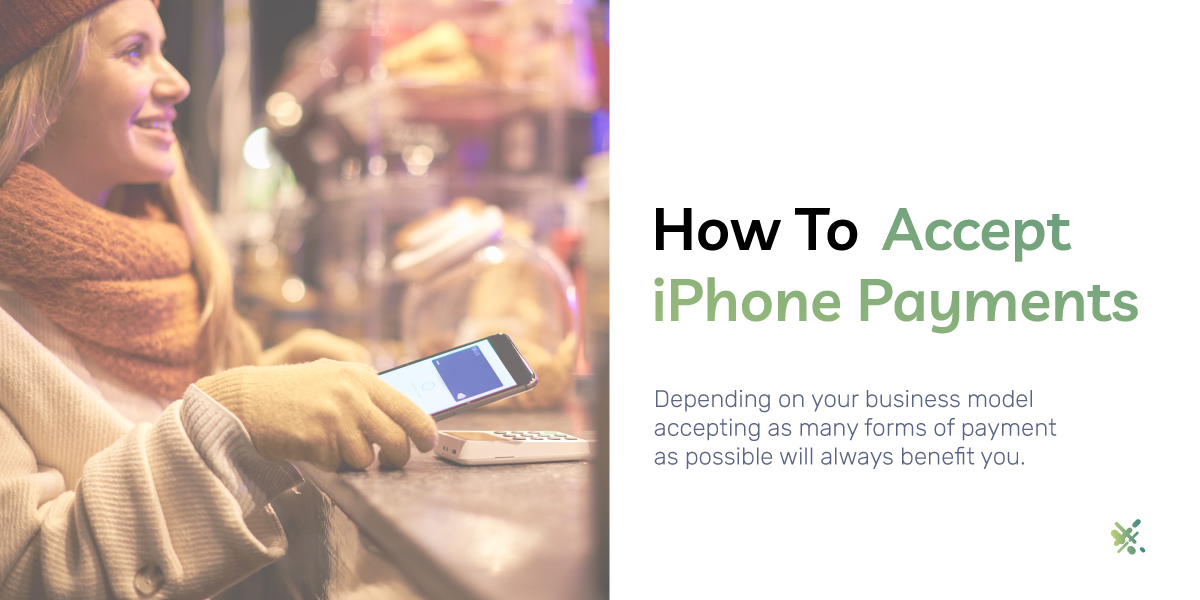iPhone or Android? It’s one of those ice-breaker questions that are as important as pizza toppings or favorite sports teams (sorry, Google Pixel, nobody cares about you…at least not in this article).
That question might be important on a dating app, but small business owners should honestly be thinking about iPhones as well: do iPhones have anything to do with your revenue?
Yes indeed.
This article will discuss the importance of accepting iPhone payments and how to implement them in your business. But first, some important statistics.
iPhone Vs. Android Users
The market penetration of iPhones is not as pervasive as Apple-lovers might think (or wish for). Or is it? The iPhone has a 57.93% market share, while Android has 41.64%. Those numbers are pretty close, as are most polarizing topics.
But the picture is more nuanced than that (ain’t it always). Younger consumers are more likely to be iPhone users. Android actually has a slight edge with consumers aged 55 and up (51% to 49%). Their edge is even bigger among consumers 35-54 (53% to 47%). But among consumers aged 18-24, iPhones win, 58% to 41%.
But wait…there’s more. iPhone users may have higher incomes. A Slickdeal study found the average iPhone user’s salary to be $53,251 compared to $37,040 for Android groupies. That’s $16,211 more in spending power. That doesn’t mean you should kick Android users to the curb. But it does mean that iPhones might play an important role in accepting credit card payments.
Consumers love their iPhones, perhaps more than Android users. The aforementioned Slickdeals study found that iPhone users spend nearly 5 hours each day on their phones, sending 58 text messages and taking 12 selfies. Android users spent “just” around 4 hours, sending 26 messages and taking “only” 7 selfies.
Are Android users less self-absorbed? We’re only kidding. Selfies aside, the study does indicate that Apple users appreciate the functionality of their smartphones. What does that mean in terms of payment processing and accepting cards?
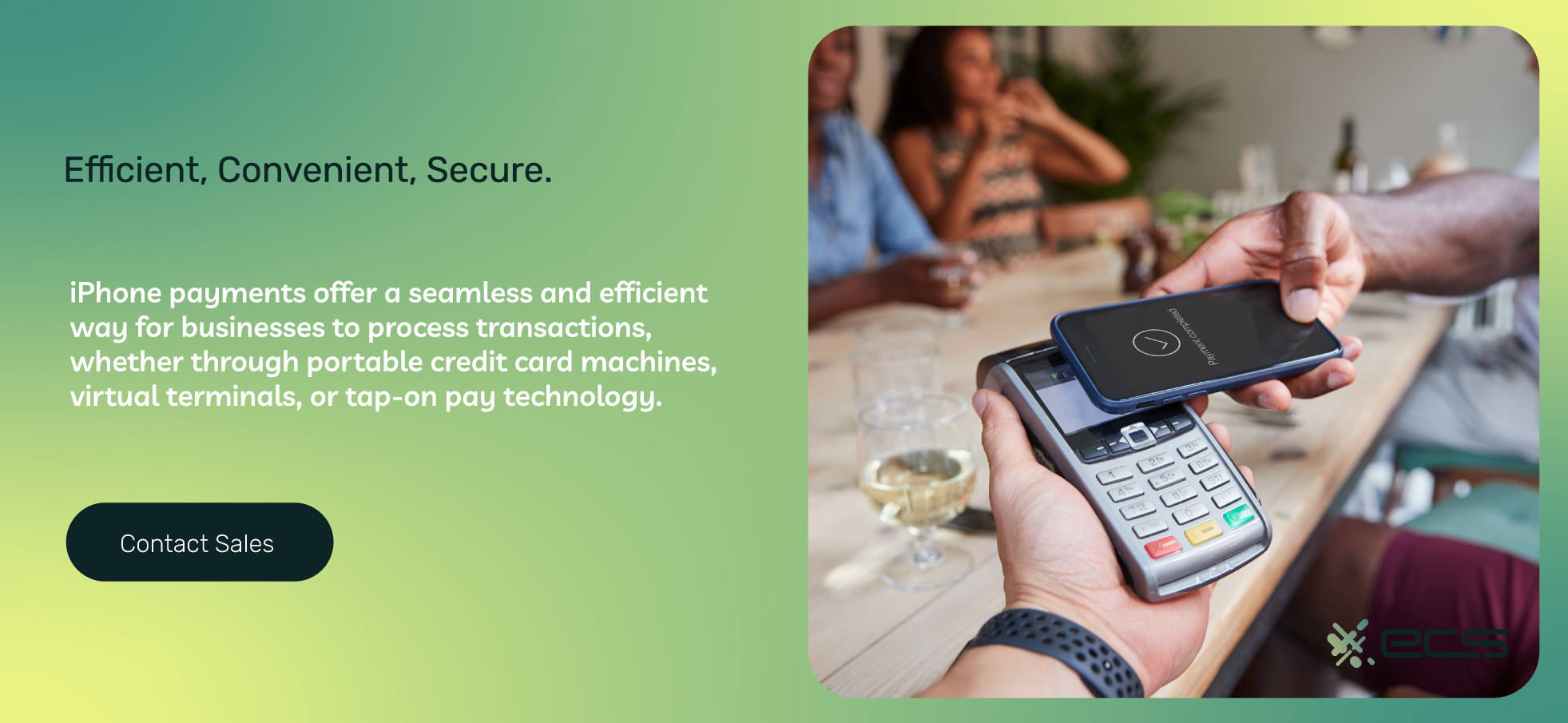
Credit Card Processing With iPhones
Processing payments should be as seamless a process as possible. If your Point of Sale (POS) terminal can accept contactless payments, this payment method will benefit your business in several ways.
One of those contactless ways of accepting payment is taking payments from an iPhone. This is perceived as a “cleaner” payment option (there’s no touching the POS system). It’s definitely a faster type of payment. As we’ve been highlighting with the above stats, iPhone credit card processing fits into the greater context of something consumers love: their Apple devices.
So, do you need to do anything different to accept iPhone payments? And how exactly does CC processing for iPhone payments work? We’ll keep it brief, but in a nutshell, it uses something called NFC or near-field communication radio waves.
An NFC chip inside the iPhone (or Apple watch) gets activated when near a POS terminal. Customers who want to pay can double-tap the side button on their device to open their digital wallet. A default card will pop up, or they can select an alternate (saved) card.
If you’re wondering how the cards “got” into their phone, the iPhone user must manually upload them by inputting the numbers or taking a picture. The card information is saved in their phone, but in a garbled form that can only be decoded by the payment processors and banks.
Before making a purchase, the customer will need to authenticate their FaceID or use a passcode. They then hold their phone near the terminal, and that’s it. The payment is complete within seconds, much quicker than swiping or inserting EMV chips.
Is There Specific Apple Payment Hardware?
There are no specific Apple store credit card readers for iPhone payments made with Apple products. It’s a little surprising because Apple tends to be highly controlling about its product and hardware ecosystem (and you know that if you’ve ever paid for an overpriced charger).
However, Apple likely realizes that forcing business owners to use separate payment hardware and the regular old POS would probably backfire. That said, you don’t need a unique POS. However, you need a POS terminal that can accept contactless payments because that’s how iPhone payments work.
Speak to your payment processor and see if their POS terminals can process Apple payments. It would help if you already were accepting contactless payments for several reasons, one of which is that magnetic stripe payments will be gone entirely within the next five years.
Your payment processor should ensure you have the most up-to-date equipment, whether you purchased it or are leasing it from them. At some point in the future, that will mean machines that can perform facial scans, as Mastercard is already experimenting with. Until that, it at least means taking EMV chip insertions and contactless payments.
Can I Accept Payments On My iPhone?
Now, let’s look at another aspect of iPhone payments: collecting payments on an iPhone. There is obviously no credit card swipe feature on an iPhone (and annoyingly, no headphone jack outlets either, at least since 2016). However, several companies make portable credit card machines for iPhones. These small devices can plug into an iPhone, allowing businesses to collect and swipe credit cards “on” an iPhone.
Speak to your payment processor about credit and debit card readers for iPhones if you feel your business would benefit from this. There are some other components regarding how to accept credit card payments on an iPhone. You will also need an app that integrates with the hardware to facilitate the payment.
Keep in mind that this does not exclusively mean Apple payments. When paying with an iPhone, a consumer is using Apple Pay. But if you’re the one collecting payments, those payments could be plastic cards, Androids, or iPhones.
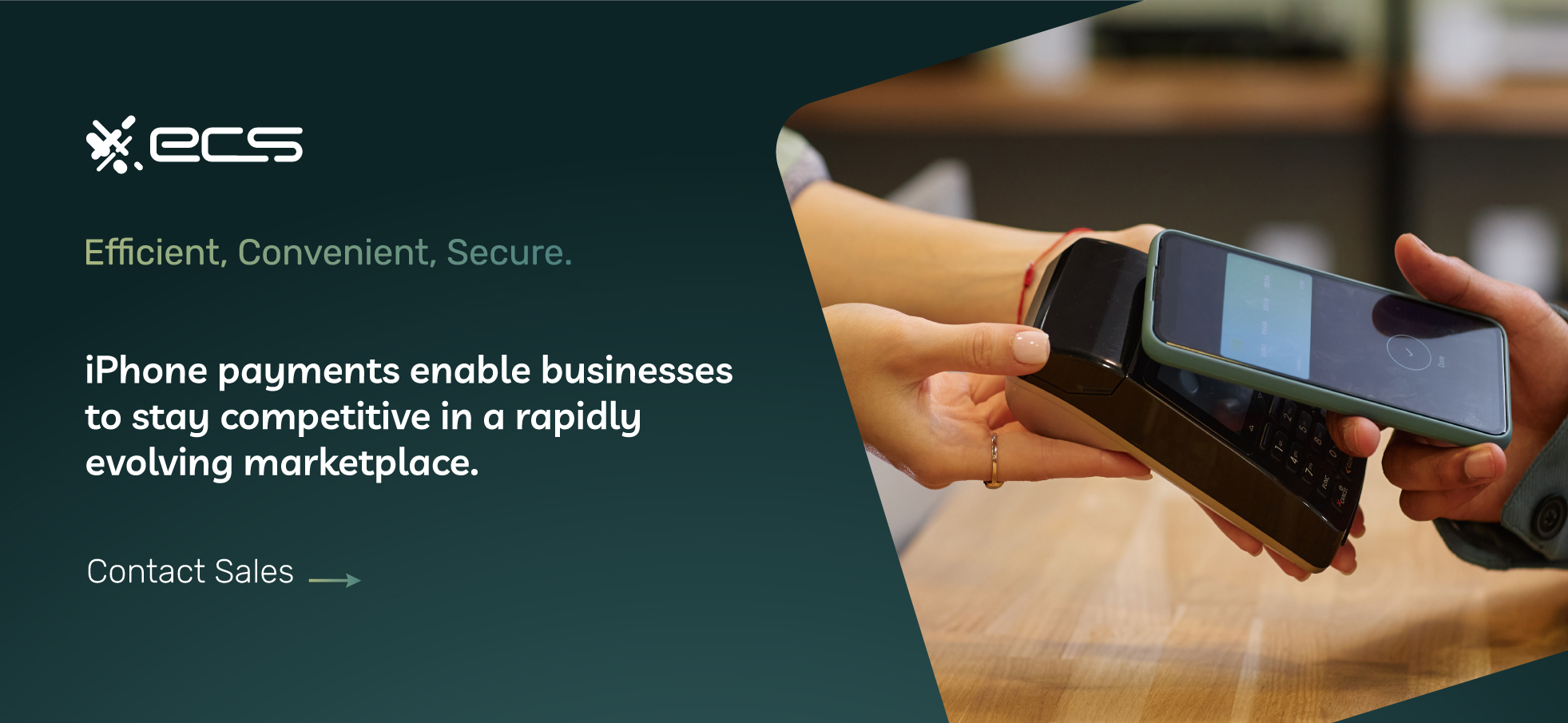
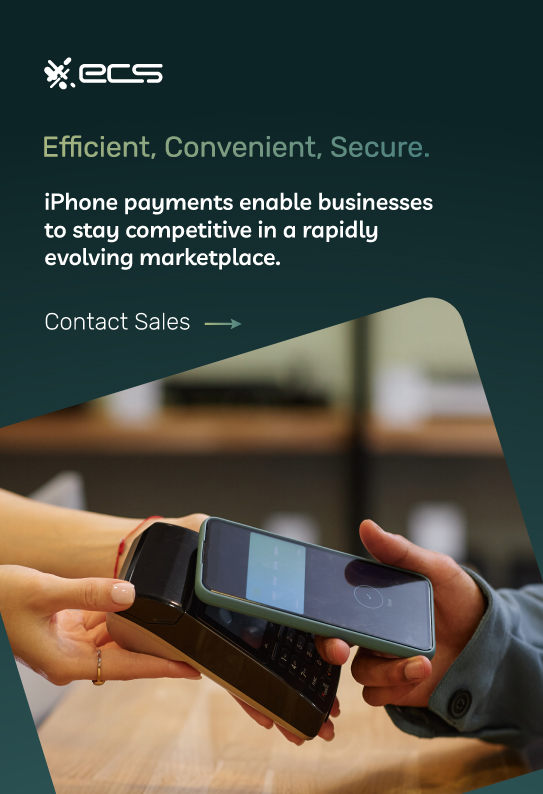
Businesses That NEED Mobile Credit Card Swipers For iPhone
Credit card swiping on the iPhone may not be necessary for a brick-and-mortar store with POS terminals at the checkout counter. However, there are several contexts in which asking how to take card payments on a phone makes sense.
By “swiper,” we mean devices that can accept swipes, chip insertions, and taps, to be clear. So, what types of businesses would benefit from this particular piece of hardware? In the main, mostly businesses that have a mobile, on-the-go component.
In-Person Service Providers Like Home Maintenance
When collecting cash or check payments for home repair, each option has its downsides. Cash and checks can get lost. Cash can attract crime. Checks need to be cashed. They can also bounce. Wouldn’t it be nice to just collect card payments?
Until now, many contractors have sent a bill or invoice or asked the customer to call the dispatcher. Neither of these is ideal either. The customer could forget about the bill or just not pay it, making you need to look into a mechanic’s lien. Or the customer could get annoyed that they have to make a call to pay.
How different things would be if you could just take a credit card (or even a mobile wallet payment, right then and there). Imagine pulling the card reader out of your pocket, plugging it into your iPhone, and collecting payment.
Wham, bam, and thank you ma’am. On to my next job.
Consultants, Trainers, and Freelancers
This is one group of people who are always taking their business on the go. They meet with clients and then go on to their next appointment (sort of like the aforementioned in-person service providers. Accepting payments on their iPhone can make closing deals with new clients (and accepting payments from current clients) go much smoother.
Many sole proprietors in these categories (consulting, training, and freelancing) rely on billing and invoicing to collect payments. This is an acceptable industry standard but can result in many after-hours accounting and missed payments.
Imagine how much easier things would be if you could accept payment right at the end of a training session, consultation, or meeting with a new potential client about a project. There would be no need to send or email an invoice and follow-up emails or texts.
Payment processing software can also integrate with your accounting software so that the payments would go right into your Quickbooks
(or whatever you’re using to keep track of your numbers). SME owners may spend as much as 10 hours per week on backend tasks. Mobile credit card processing and automating their integration could considerably cut down on this time.
Event Vendors
Taking your business to a fair, event, or tradeshow? It can be a hassle to drag the POS with you, especially if it’s attached to a register. Why not just take your iPhone and a pocket-sized payment collection tool? This is all the more true if you’re heading somewhere with limited electricity or wifi.
Using your iPhone to collect payments will make setup and breakdown much quicker. You can also appoint some staff to move up the line with their iPhones, taking orders and collecting payments. This can speed up the lines dramatically at events that seem to get out of control.
Accepting payments via the mobile terminal of an iPhone can greatly broaden your horizons. You’ll be able to range farther afield and attend events that may not reliably provide outlets—like music festivals and events in nature.
You can charge your iPhones on the way to the event. Once you’re there and they’re fully loaded, you can accept plastic and mobile wallet payments even if there is nothing to plug a POS into.
Nonprofits
Another type of organization that would benefit from iPhone payments is nonprofits. Nonprofits rely on grassroots fundraising (e.g., going door to door asking for donations). Your team members could be equipped with mobile payment terminals as they seek donations.
This makes it much easier for donors to contribute to the spot. There are also mobile printers that can generate a receipt to keep track of their contribution for tax purposes. It also makes it easier for the nonprofit to ensure all team members stay accountable, as cash donations are easier to “skim” from than electronic payments fed into a ledger.
Donors may also be more likely to donate more if they can do it with a credit or debit card. The average consumer is less and less likely to carry more than a handful of dollars on their person these days.
Research has also shown that people make larger purchases with plastic than cash. Part of this is the fact that plastic purchases have a delayed impact (especially credit cards). You can use this psychology to your advantage by encouraging fundraisers to take credit and debit card payments. And the easiest way to do that is to give them mobile card readers that connect to their iPhones.
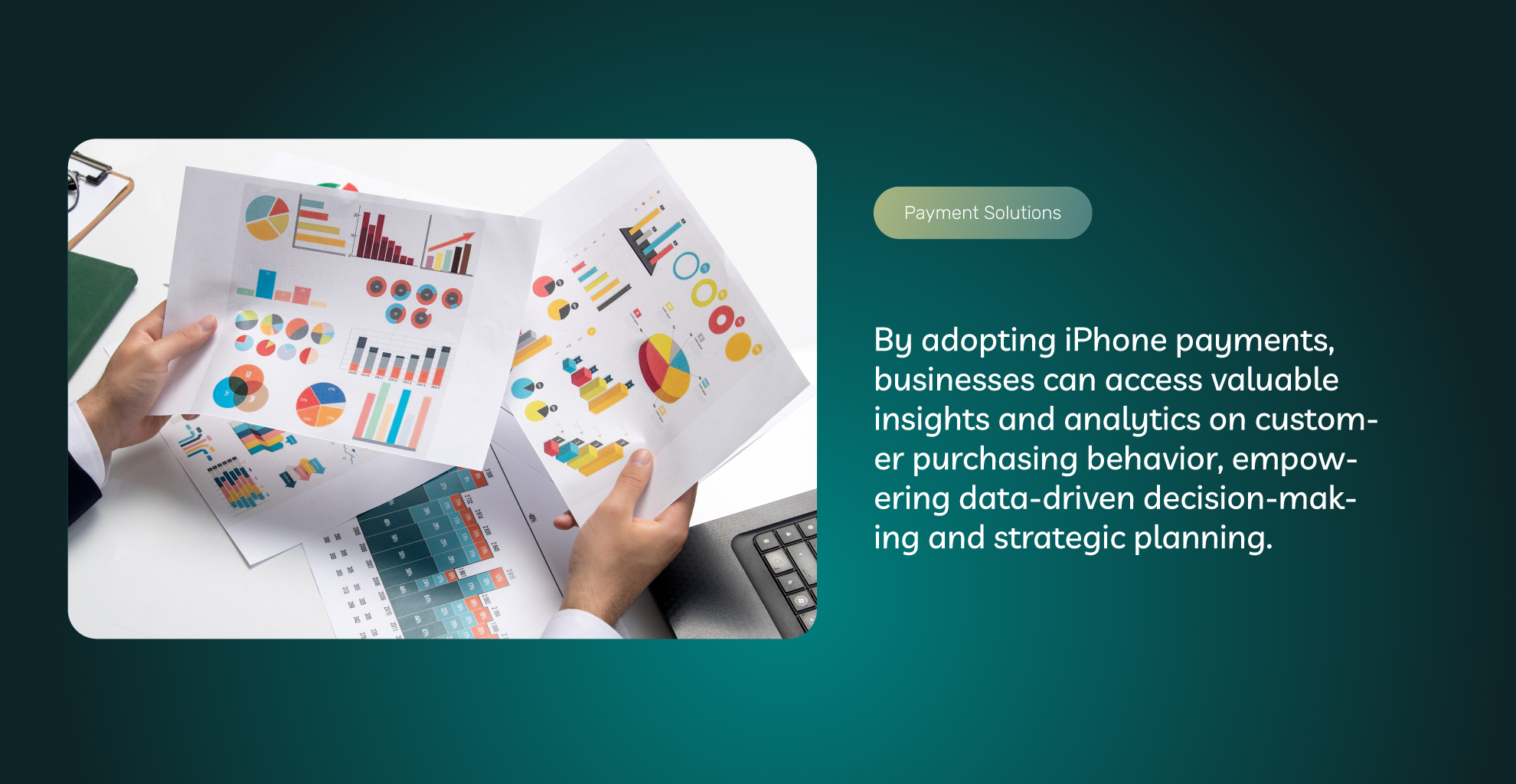
How Much Does It Cost To Accept iPhone Payments?
That will depend on your payment processor. One benefit of taking payments by iPhone is that they can be categorized as card-present transactions instead of card-not-present transactions. Card-present transactions mean the cardholder is in front of you. As such, they are less risky to the banks involved in processing the transaction.
Some business owners might point to QR codes and say this is a sufficient means of facilitating payments on the go. It is clean and simple, after all. The customer scans a code. They are taken to a website on their phone, where they complete the payment by inputting their card information.
However, even if the customer is standing in front of you, these payments are made through an online payment gateway and are consequently considered card-not-present transactions. However, if you have a mobile terminal that accepts plastic swipes, chips, and dips, these are considered card-present transactions, and the credit card processing fees for card-present transactions cost less.
On the flip side, there are fees for accepting payments made with an iPhone (e.g., Apple Pay). Apple charges the banks involved an extra fee, but not the individual merchant. To learn more about the exact costs of accepting iPhone payments (on your phone or from a customer’s phone), you’ll need to provide more information about your business (the industry, how many years you’ve been in business, and other points).
If you’re interested in exploring this possibility and opening up new doors for your business, contact us or fill out the form below.
Frequently Asked Questions About iPhone Payments For Businesses
Depending on your business model, accepting as many forms of payment as possible will always benefit you. Accepting iPhone payments caters to a significant market share, especially younger consumers and those with higher income demographics, and thus spending power, as recent polls have discovered as the main holders of iPhones.
No, there are no specific Apple mobile credit card readers exclusively for iPhone payments. However, your business does need a POS system or payment terminal that can accept contactless NFC payments. If you need better payment processing solutions, contact ECS Payments.
Yes, businesses can accept payments on an iPhone using portable credit card machines, virtual terminals, or tap-on pay technology.
Businesses that benefit the most from mobile iPhone payments have an on-the-go component, such as in-person service providers like home maintenance professionals, consultants, trainers, freelancers, and event vendors.
